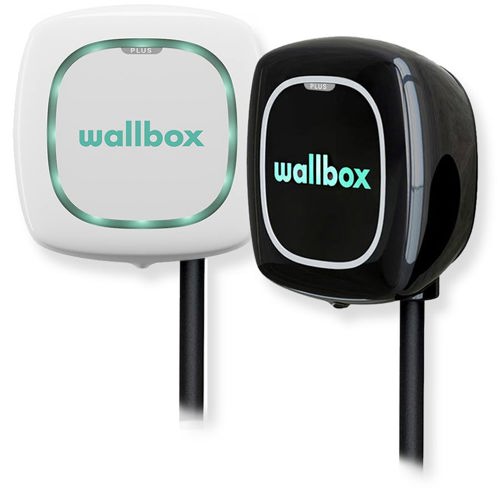Charging an EV at home account for 80 percent of all EV ownership charging.
With another 30,000 new plug-in electric vehicles (PHEV and BEV) added to the sales charts in New Zealand in 2023, as the demand on the slowing growing public EV charger network creeps along, the need for efficient and convenient home charging solutions has become increasingly important.
The ultimate guide to every BEV on sale in NZ

While the three-pin domestic sockets best suited to PHEVs, where an overnight charge will always always go from zero to 100 per cent, bigger batteried BEVs require either longer time, or a little more oomph. Even PHEVs, for example, that would use their EV range on a Saturday morning doing sports and errands, could use a quick top-up for the Sat night events.

And this is where a wallbox comes in – and, indeed a Wallbox... (note the use of a capital W). Both a proprietary synonym for home EV chargers and also the brand name if EV chargers founded in Spain in 2015, Wallbox is distributed locally by TransNet.

After a glut of EVs to drive in 2023, and the increasing challenges of sharing those EVs amongst our three staffers while dealing with the often-busy public charging system, DRIVEN had come to realise that time equals money and we were spending an increasingly inordinate amount of time sitting at charging stations either charging (at best) or waiting in a queue (at worst).
So, in short, we fitted a Wallbox. We’d previously fitted a ChargeMaster home EV wallbox at home and it changed our EV-driving life. So having one also at work, for us, was a massive game-changer – probably most for me, doing the Hamilton to Auckland return trip multiple times per week, virtually draining half of an EV’s battery in one leg.

The speed of charging advantage is possibly the greatest, with the AC charger still offering battery-friendly speeds a little over 7kW, offering charging speeds around 6 times faster than a portable charger using a domestic three-pin socket. So after a few months of successful use, we've put together our Top 5 tips for using a home EV charger:
1. Which home EV charger is best?
As Indiana Jones had to do when choosing the Holy Grail, choose wisely. Research everything from how the charger looks, colour, the size, location and length of cable, to how the cable hangs and stores; if it has an internal RCD (Residual Current Device) or other costs, and potential installation partners and costs. It could be that installation costs are equal to (or more) than the price of the charger. Also choose the right vehicle plug: a Type 2 plug is increasingly becoming the standard, though some earlier/Japanese EVs will use the Type 1 plug. Consider a charger with the ability to upgrade to Type 2. Most home chargers will use a single-phase 7.4kW power, though three-phase 22kW could be a consideration in some homes or workplaces.
Other charger factors include over-the-air updates and the ability to set charging times for off-peak electricity, though these are often configurable via the car.

2. Installation location
Slapping up a box on a wall is more than that, because it will become a fixture of the house. Consider not just the look of it when installed, including the cable and access to it, but also how it could be configured neater in to a home. From the wall of a garage, to the outside location that might require security or a PIN, possibly the simplest but biggest concern is where to mount it in regard to how and where a car is parked. An MG ZS EV has it’s charger port in the grille, while a Mazda CX-60 has its flap door in the right-rear: a BYD has it on the right front, and a Tesla has it on the left-rear.
The charger is very likely to outlive the particular model of EV, so consider a more universal location and/or a longer cable that can reach. And also factor in a rack where the cable can hang, as this isn’t always in the EV charger package. Our Wallbox Commander unit has a Type 2 cable long enough to reach one side, as we have the option to nose or rear-end park an EV. A popular home charger is the Wallbox Pulsar, in black or white, which has many features including a myWallbox smartphone app and the option of 5m or 7m cables.

3. Utilise Off-Peak Charging Hours: In New Zealand, electricity rates often vary based on the time of day. To optimise cost savings and contribute to a more sustainable energy grid, take advantage of off-peak charging hours. These are typically during the night when electricity demand is lower. Many Wallbox units come equipped with scheduling features, allowing you to program your charging sessions during these economical periods. By doing so, you not only reduce your electricity costs but also help balance the load on the power grid. Also look at your energy provider, as it might offer free hours of charging.

4. Charge to 80 per cent
While charging your phone to 100 per cent is normal, it’s being used immediately. One way to reduce a battery’s longevity is to charge is to 100 per cent, and let is sit that way. It’s like inhaling and holding it for as long as possible. Batteries kept between 30-80 per cent will have the longest life, and it’s being common to see well-treated EV batteries last 10-15+ years, without diminishing greatly. Planning a big strip in two days, then no problem, bump the maximum charge up to 100 percent, but unless you’re planning to use it, in most cases, 80 per cent should be fine.

5. Charging an EV safely
Avoid overloading circuits, and this starts by using a smart charger: one that reduces the charging load when it detects other (more important) home functions are working, such as heating/cooling, water, power for example. Avoid using an extension lead and ensure the charger is NZ compliant and compatible. Read the full Worksafe EV charging guidelines here.
Thanks to/contact: www.transnet.co.nz

















